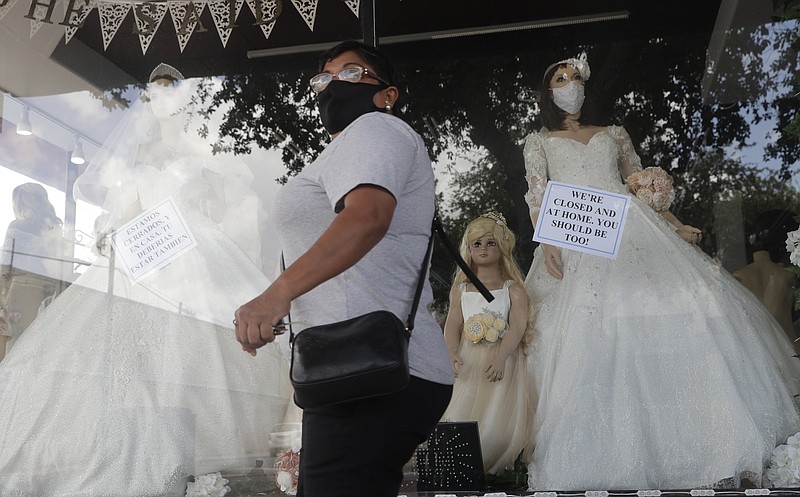WASHINGTON (AP) - The coronavirus pandemic sent the U.S. economy plunging by a record-shattering 32.9 percent annual rate last quarter and is still inflicting damage across the country, squeezing already struggling businesses and forcing a wave of layoffs that shows no sign of abating.
The economy's collapse in the April-June quarter, stunning in its speed and depth, came as a resurgence of the viral outbreak has pushed businesses to close for a second time in many areas. The government's estimate of the second-quarter fall in the gross domestic product has no comparison since records began in 1947. The previous worst quarterly contraction - at 10 percent, less than a third of what was reported Thursday - occurred in 1958 during the Eisenhower administration.
So steep was the economic fall last quarter that most analysts expect a sharp rebound for the current July-September period. However, with coronavirus cases rising in the majority of states and the Republican Senate proposing to scale back aid to the unemployed, the pain is likely to continue and potentially worsen in the months ahead.
The plunge in GDP "underscores the unprecedented hit to the economy from the pandemic," said Andrew Hunter, senior U.S. economist at Capital Economics. "We expect it will take years for that damage to be fully recovered."
That's because the virus has taken square aim at the engine of the American economy - consumer spending, which accounts for about 70 percent of activity. That spending collapsed at a 34.6 percent annual rate last quarter as people holed up in their homes, travel all but froze, and shutdown orders forced many restaurants, bars, entertainment venues and other retail establishments to close.
The Dow Jones Industrial Average closed more than 200 points down - though earlier it had seemed set for a much bigger fall.
Tentative hopes for a swift recovery have been diminished by a resurgence of viral cases in the South and the West that has forced many businesses to close again or reduce occupancy. Between June 21 and July 19, for example, the proportion of Texas bars that were closed shot from 25 percent to 73 percent. Likewise, 75 percent of California beauty shops were shuttered July 19, up from 40 percent just a week earlier, according to the data firm Womply.
The second surge does appear to be leveling off, but cases are still rising in close to 30 states.
Many states have imposed restrictions on visitors from the states that have reported high levels of cases, hurting hotels, airlines and other industries that depend on travel.
That has led to mammoth job losses. In a sign of how weakened the job market remains, more than 1.4 million laid-off Americans applied for unemployment benefits last week. It was the 19th straight week that more than 1 million people have applied for jobless aid. Before the coronavirus erupted in March in the U.S., the number of Americans seeking unemployment checks had never exceeded 700,000 in any one week, even during the Great Recession.
An additional 830,000 people applied for unemployment benefits under a new program that extends eligibility for the first time to self-employed and gig workers. All told, the government said roughly 30 million people are receiving some form of jobless aid, though that figure might be inflated by double-counting by some states.
The pain could soon intensify further: A supplemental $600 in weekly federal unemployment benefits is expiring, and Congress is squabbling about extending the aid, which will probably be done at some reduced level of payment.
"The risk of temporary job losses becoming permanent is high from repeated closures of businesses," said Rubeela Farooqi, chief U.S. economist at High Frequency Economics. "That could result in an even slower pace of recovery."
Last quarter's economic drop followed a 5 percent fall in the January-March quarter, during which the economy officially entered a recession, ending an 11-year economic expansion, the longest on record in the United States.

